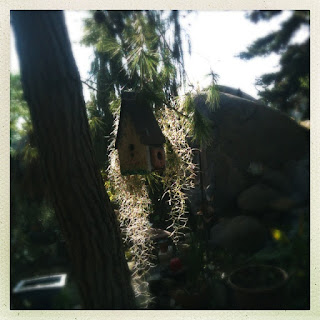“ ‘You may seek
it with thimbles — and seek it with care;
You may hunt it
with forks and hope;
You may threaten
its life with a railway-share;
You may charm it with smiles and soap —’ ”
Lewis Carroll, The Hunting of the Snark
It’s just too cold and gloomy outside. I love the
winter weather in So Cal, and I love the rain: almost 4” in my backyard since
rains began in mid-December. That’s almost a year’s worth. But it’s not
inviting outside, so here I sit in an overheated house – bored with dehydrating
fruit marinated with spices and liquor. (Although I should mention that my
pears seasoned with crushed anise seeds and infused with violet liquor are
awesome.)
So, trying to reach enlightenment seems like a
worthwhile diversion.
And my search has been a qualified success. I
have had a revelation. The search for enlightenment is what separates man from
animals. Cooped up with me when it’s too
cold and rainy for a walk or a romp on the rocks in the front yard, my dog
prefers to search for trouble. Or a place to pee, or for something of questionable edibility on
the floor.
I have also realized that my dog’s definition of
edible – plastic objects like medicine jar lids, rubber canning gaskets,
pencils, dropped silverware – is somewhat broader than hungry humans might consider possible sources of food. Perhaps that’s another thing that separates us
from animals. Although I haven’t verified this by checking with Wikipedia, I am
confident that humans generally don’t eat jar lids or forks.
So is that sense of certainty on the basis of no
thoughtful study or research another sign that I’m becoming enlightened? Or, in
the alternative, is it a sign that I’m more like Todd Aiken than I ever
suspected?
But I have learned another thing in my quest for
enlightenment, and I will share it with you.
I thought that the term Bodhi Tree referred to a single tree beneath
which Gautama Buddha attained supreme enlightenment. The species of his tree is
generally understood to be a sacred fig (Ficus
religiosa).
But it turns out that Bhodi Tree means Tree of
Enlightment and may or may not be a sacred fig. According to Robert Beer, Tibetan Buddhist Symbols there have been
Six Universal Buddhas, each of whom “are believed to have attained
enlightenment under different trees”.
They are:
Budda Tree
Vipashyin Ashoka (Saraca indica)
Shikhin Pundarika or edible white lotus tree
Vishvabhu Sala tree (Vatica robusta, Shorea robusta)
Krakuchandra Shirisha
tree (Acacia sirissa)
Kanakamuni Glomerous fig tree, or undumbara (Ficus glomerata)
Kashyapa Banyan tree (Ficus indicia)
I have an abridged version of the above book
by Beer: The Handbook of Tibetan Buddhist Symbols. Strangely it lists
only 5, skipping Shikhin. Either there is something about the “epochs
preceding Shakyamuni” which I didn’t bother to read and would explain this; or
the abridged version is abridged because it only lists 5 of the 6. From the Handbook, I was left with the impression that Gautama Buddha and his sacred fig was the sixth of
the Six Universal Buddhas.
Clearly, I’ve got work to do before I
will be ready to sit under whatever tree I select to be my tree of
enlightenment. By then, I hope the weather improves.


No comments:
Post a Comment